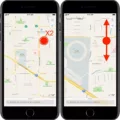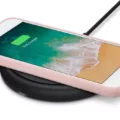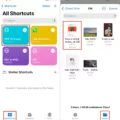If you’re using Microsoft Word on a Mac, you may find yourself needing to delete a page or two. Whether it’s an extra page that was accidentally added, or you’re just trying to streamline your document, the process is relatively simple. To delete a page in Word for Mac, follow these steps.
First, go to the page you want to delete and press the Option+?+G keys simultaneously. This will bring up the “Enter Page Number” box. Then type \page and press Enter on your keyboard. You should then see the entire page highlighted in blue. Select “Close” and verify that a page of content is selected before pressing Delete on your keyboard.
You can also use the Navigation Pane to delete pages from your Word document. To do this, select the “View” tab and then check the box next to “Navigation Pane.” This will open up a left-hand panel with thumbnails of all of your document pages. Simply select the blank page thumbnail and press the “delete” key on your keyboard to remove it from the list.
Finally, if you need to delete a page break in Word for Mac, press Ctrl+Shift+8 (or ? +8 if you are using a Mac). This should highlight any existing page breaks in blue so that they can be easily selected and deleted if necessary.
By following these simple steps, deleting pages from a Microsoft Word document on a Mac should be no problem at all!

Deleting an Extra Page in Word
To delete an extra page in Word, you first need to select the page you want to delete. Click or tap anywhere on the page, and then press Option+?+G on your keyboard. In the Enter page number box, type \page, and then press Enter. This will select the entire page of content. Verify that the correct page has been selected, and then press Delete on your keyboard to delete it.
Deleting a Page in Word That Won’t Delete
If you are trying to delete a page in Word that won’t delete, there are a few things you can try.
First, make sure that the page break is actually selected. You can do this by pressing Ctrl+Shift+8 (or ? +8 on a Mac) to display the non-printing characters. This will enable you to see if the page break is selected or not. If it is, you can delete it just like any other text.
If the page break is not selected, try selecting all of the text on the page and then deleting it. This should remove everything before and after the page break, effectively deleting the page.
If neither of these solutions works, you may need to manually insert a new page break after the one that won’t delete. To do this, place your cursor where you want the new page break to be and press Ctrl+Enter (or ?+Enter on a Mac). This will create a new page break and allow you to move forward with deleting your unwanted page.
Deleting a Blank Page Pane in Word for Mac
To delete a blank page in Word for Mac, you will need to open the document you wish to modify. Once it is open, select the “View” tab and then check the box next to “Navigation Pane.” This will display a list of thumbnails of all the pages in your document on the left-hand side. Select the thumbnail of the blank page and press the “delete” key on your keyboard. This will delete that page from your document.
The Difficulty of Deleting a Blank Page in Microsoft Word
It can be difficult to delete a blank page in Word because the control characters that cause the blank page (such as manual page breaks) are not always visible. In the default view, these characters are hidden, making it hard to identify and delete the page. To make it easier to spot these characters, you can adjust the view by using the Show/hide paragraph marks function. Once you have identified the control character, you can then delete it and remove the blank page from your document.
The Inability to Delete a Second Page in Word
It is possible that the second page in your Word document is a section break. This can occur when you have added a new page to your document, or if the text has been copied and pasted from another document. Section breaks separate content into distinct sections, which can be helpful if you want to format specific parts of the document differently. To delete the second page, try selecting the section break and pressing Delete on your keyboard. If that doesn’t work, click on the View tab from the Ribbon and select (check) the Navigation Pane in the Show section. Now, click on Pages and select the blank page thumbnail in the left panel. Press your Delete key until it is removed.
Deleting an Entire Page on a Mac
To delete an entire page on a Mac, open the document you would like to delete a page from. Then, in the toolbar, select ‘Page Thumbnails’. This will bring up thumbnails of all the pages in your document. Select the page you would like to delete by clicking on its thumbnail, then press ‘Delete’ on your keyboard. If you would like to delete multiple pages at once, press and hold down the ‘Command’ key as you select each page’s thumbnail. Once you have selected all of the pages you want to delete, press ‘Delete’ again and they will be removed from your document.
Conclusion
In conclusion, deleting a page in Word Mac is easy. All you need to do is select the page you want to delete and press Option+?+G. In the Enter page number box, type \page and press enter. Verify that a page of content is selected and then press delete on your keyboard. Finally, press Ctrl+Shift+8 (or ? +8 on a Mac) to select the page break and delete it. You can also use the navigation pane to delete a blank page thumbnail found in the left-hand panel by pressing the “delete” key. By following these simple steps, you can quickly and easily delete a page from your Word document on Mac.








